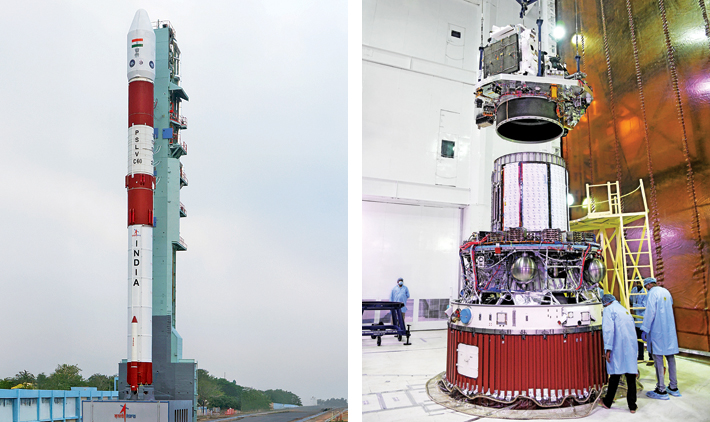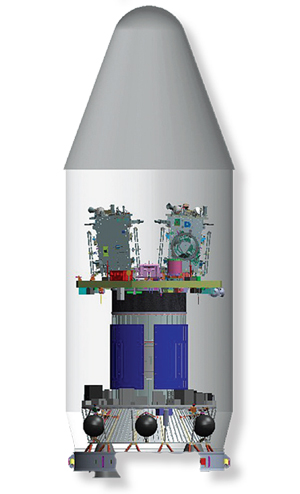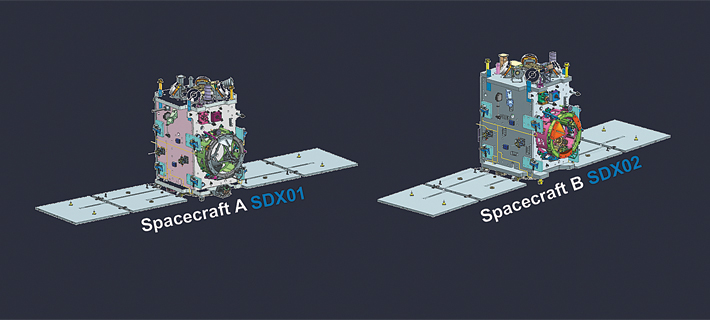INDIAN ARMED FORCES CHIEFS ON OUR RELENTLESS AND FOCUSED PUBLISHING EFFORTS

The insightful articles, inspiring narrations and analytical perspectives presented by the Editorial Team, establish an alluring connect with the reader. My compliments and best wishes to SP Guide Publications.

"Over the past 60 years, the growth of SP Guide Publications has mirrored the rising stature of Indian Navy. Its well-researched and informative magazines on Defence and Aerospace sector have served to shape an educated opinion of our military personnel, policy makers and the public alike. I wish SP's Publication team continued success, fair winds and following seas in all future endeavour!"

Since, its inception in 1964, SP Guide Publications has consistently demonstrated commitment to high-quality journalism in the aerospace and defence sectors, earning a well-deserved reputation as Asia's largest media house in this domain. I wish SP Guide Publications continued success in its pursuit of excellence.
SpaDEx: Another Feather in ISRO’s Cap
SpaDEx is key to achieving India’s long-term space exploration goals, including manned spaceflight, spacecraft maintenance, and the construction of the Bharat Antariksha Station (BAS)

Never ever in the recent history of space exploration have the space agencies across the globe, the media and a nation of 1.43 billion people watched the events unfold in space with so much of excitement and awe as the Space Docking Experiment (SpaDEx) by Indian Space Research Organisation (ISRO). This is one event that has gathered as much attention of the nation as the Moon landing by Chandrayaan-3 on August 23, 2023.
ISRO announced on January 16, 2025 that they have successfully completed docking with smooth precision, making India the fourth space faring nation to achieve this significant milestone.
Space Docking is a controlled mechanical process for spacecraft orbital mating. It begins with the initial approach of the spacecraft and its first contact. It is performed with a docking system that includes control avionics and mechanical docking assemblies. Methods for the design, simulation and testing different docking systems have been researched and reviewed since 1984. The initial conditions for docking are provided by a rendezvous system and the docking assemblies themselves actually perform the mechanical process of spacecraft mating.
This process is a long drawn one and comprises of various stages, takes tens of hours depending upon various factors. Docking involves aligning the spacecraft docking adaptor with the target docking point and then controlling the spacecraft so that it docks with zero relative velocity (both angular and linear), zero angular error and zero position error. It is a six-degrees-of-freedom (6DOF) problem.

DOCKING IN SPACE A NICHE TECHNOLOGY
Only the US, Russia, and China have mastered such advancements so far. The US has been a pioneer in space docking, undertaking manual docking on March 16, 1966 in which Gemini VIII (astronauts Neil Armstrong & David Scott) accomplished the first docking of two spacecraft with an unmanned Agena target vehicle launched earlier the same day. However, world’s first truly automatic docking of two spacecraft took place nearly 50 years back in the Low earth Orbit (LEO) with Kosmos-186 and Kosmos-188 of erstwhile USSR docking on October, 30, 1967. They remained mechanically docked for 3.5 hours. The US fully automatic docking took place with the docking of US’s Apollo with Russian Soyuz capsule in 1975. In 2011, China accomplished its first space docking mission when Chinese Shenzhou-8 spacecraft docked with space lab module Tiangong-1 in LEO. Elon Musk owned SpaceX is among the first private company to have developed automatic docking technology and now the International Space Station (ISS) relies on SpaceX for docking. Space docking operations are being undertaken by these countries as a matter of routine. Through the SpaDEx mission, India is marching towards becoming the fourth country in the world to have space docking technology.
Docking spacecrafts is a complex space operation that involves heavy space crafts and many systems. The spacecrafts travelling at approximately 7 km a second have to be brought to 1 mm per second relative speed in a phased manner to achieve a soft docking.
The Indian SpaDEx mission is ISRO’s space docking experiment, by far the most historic step in India’s journey of space exploration. It’s a built up to nation’s human spaceflight capability. The SpaDEx mission will experiment autonomous space docking technology, considered crucial step for both India’s ambitious Lunar programme and its efforts to built an indigenous space station (Bharat Antriksh Station, BAS).
On December 30, 2024 the PSLV C60 rocket carrying two small spacecrafts, SDX01 (as Chaser) and SDX02 (as Target), along with 24 payloads, lifted off from the Satish Dhawan Space Centre at Sriharikota. These two small spacecraft weighing about 220 kg each were launched into a 470 km circular orbit at 55° inclination.
At launch from PSLV-C60, these Target and Chaser spacecrafts were imparted a small relative velocity. This incremental velocity allowed the inter spacecraft distance (ISD) to build to 20 km within a day. At this point, a drift maneuver was executed by which the relative velocity between the Target was arrested by using onboard thrusters when the Target and Chaser were in the same orbit with identical velocity but separated by about 20 km, known as ‘Far Rendezvous’. With a similar strategy of introducing a small relative velocity between the two spacecraft, the Chaser now was made to approach the Target with progressively reduced ISD of 5 km, 1.5 km, 500 m, 225 m, 15 m, and 3 m.
ISRO has informed that the Indian docking system is similar to the International Docking System Standard (IDSS), a petal-based design, used by other agencies but uses two motors instead of 24 used in IDSS. The SpaDEx mission also uses several new sensors such as Laser Range Finder, Rendezvous Sensor, Proximity and Docking sensor to take precise measurements while bringing the two spacecrafts closer and joining them. It will also use a new processor based on spacecraft navigation systems to determine the relative position and velocity of the other spacecraft. This is a precursor to completely autonomous systems for future missions that would be able to achieve docking without spacecraft-based navigation data.
It is further planned that after successful docking of the two spacecraft and rigidisation, electrical power transfer between the two spacecrafts will be demonstrated before undocking and separation of the two spacecrafts. Thereafter, once the SpaDEx mission is over, these two spacecrafts will start their independent operation of their respective payloads for the expected mission life of two years.
All this is part of the ambitious space roadmap revealed by Union Minister of State for Science & Technology and Space, Jitendra Singh in December 2024. India has plans for a lunar sample return mission by 2028, establish its own space stationthe Bharat Antariksha Station (BAS), by 2035 and to land an Indian astronaut on the Moon by 2040.

SpaDEx is key to achieving India’s long term space exploration goals, including manned spaceflight, spacecraft maintenance and BAS construction. The mission’s success could open up a range of opportunities for India in space exploration, including long duration human spaceflight, the construction of large space structures and commercial possibilities in spacecraft servicing and space debris management.
ISRO has been rather transparent in publishing the event by sharing some interesting radar and optical photographs and videos of the experiment taken by each spacecraft. On two earlier occasions on January 7 the spacecrafts closed in to an ISD of 200 m and later on January 9 the ISD was arrested at 230 m for half a day. Later the trials were postponed by ISRO saying that some more simulations and trials had to be conducted for reasons of excessive drift during the crucial maneuver. On January 12, 2025, the ISRO informed that a third trial attempt was made starting from 20 kms of ISD to reach up to 15 meters and later successfully progressed to 3 meters. Following this, the spacecrafts were moved back to a safe distance and the docking process was pended for further analysis. It was on January 16, 2025 morning that ISRO informed through their official Twitter handle that this milestone has been achieved smoothly and rigidisation of two satellites could be achieved successfully.
ISRO in this experiment has followed a very pragmatic and cautious approach of closely monitoring, validating alignment and other parameters with ground simulations, essentially the ‘Proximity and Docking Sensor (PDS)’ data that provides relative position and velocity over a range of 30 m to 40 cm. SpaDEx after all is an experimental mission and by maneuvering the spacecrafts closer to each other some valuable crucial data is being generated and ISRO is making best of the rare opportunity to experiment with ISD, maneuvering, firing of thrusters- its effects and various command and control protocols over various segments of LEO, during visibility period and non-visibility periods. Trials so far have provided reasonable confidence that safe soft docking by SpaDEx is only a matter of time.
ISRO’s POEM effort also needs to be appreciated. Along with the SpaDEx mission the PSLV-C60 was also tasked with the POEM mission. Simply put, POEM is an acronym coined by ISRO for ‘PSLV Orbital Experiment Module’, it relates to the employment of the spent fourth stage of the PSLV. While the first three spent stages off PSLV fall back into the ocean, the final stage (PS4) after launching the spacecraft into orbit is discarded and ends up as a space junk. Two years back, ISRO hit upon the idea of innovatively utilising the spent stage as an orbital stabilised platform for undertaking experiments as a floating lab in space. These experiments help in validating various proof-of-concept and other enabling technologies for future missions. The first POEM was launched in June 2022. The POEM has its dedicated solar panels, a Li-Ion battery, a Navigation Guidance and Control (NGC) system for attitude stabilisation- essentially controlling its orientation with four sun sensors and a magnetometer, a dedicated Helium gas control thrusters, it also has a telecommand enabled feature. POEM missions have a life of approximately three months.
PSLV-C60 SpaDEx mission launched on December 30, 2024, is the fourth POEM Mission (POEM-4). It has a total of 24 payloads, 14 from ISRO and DOS centres and 10 are from various Space Start-Up companies and Academia.
Success of SpaDEx mission not only strengthens India’s position in space technology but also opens new vistas of opportunities in spacecraft servicing, lunar and deep space exploration and global collaborations. The SpaDEx mission success could open up a range of opportunities for India in long duration human spaceflight, the construction of large space structures and commercial possibilities in spacecraft servicing and space debris management.
Mastering rendezvous and docking operations is indeed a historic feat in space arena that will catapult India into an elite league of nations capable of executing complex space operations. Nation salutes ISRO for successful outcome of this SpaDEx mission.





